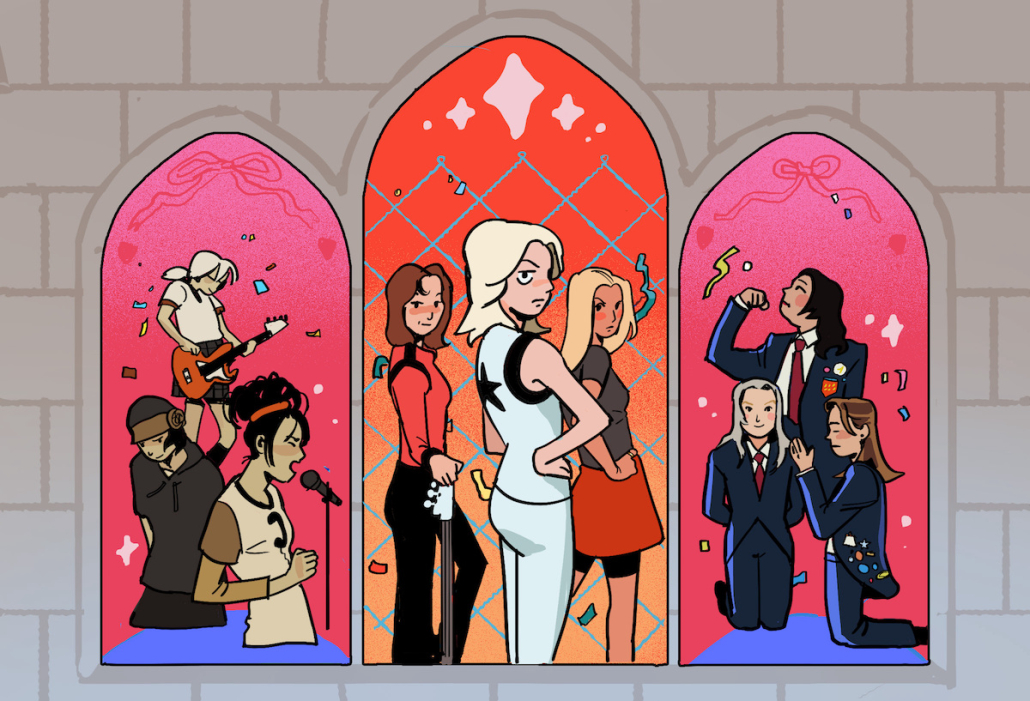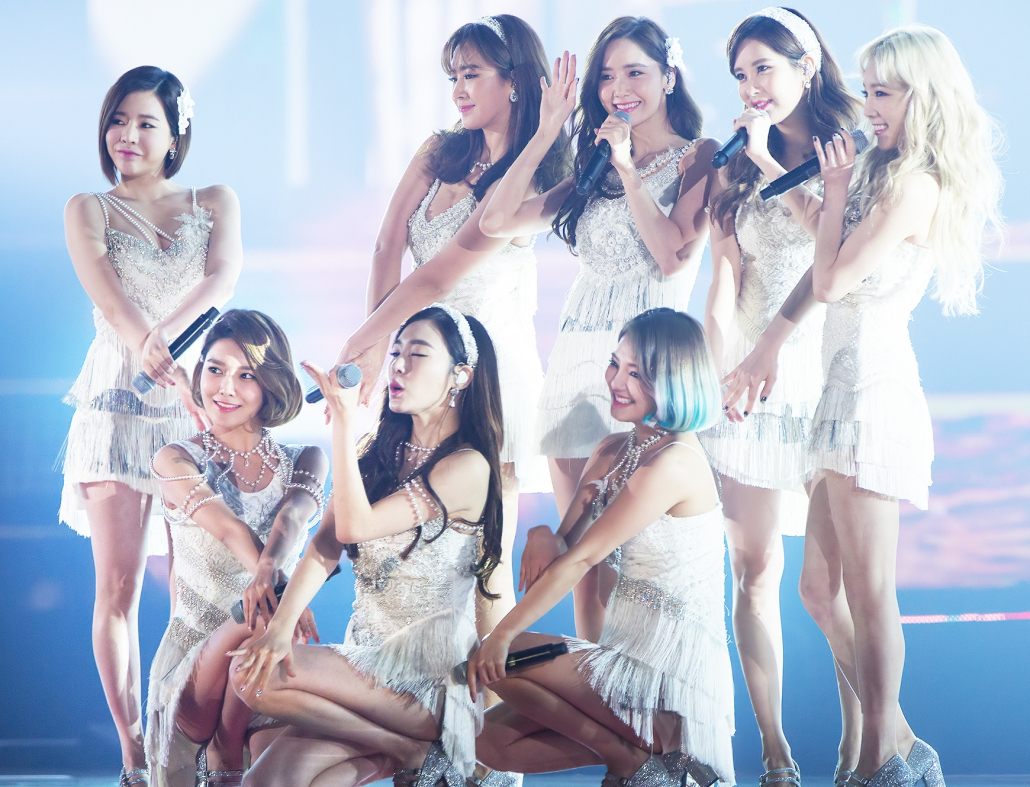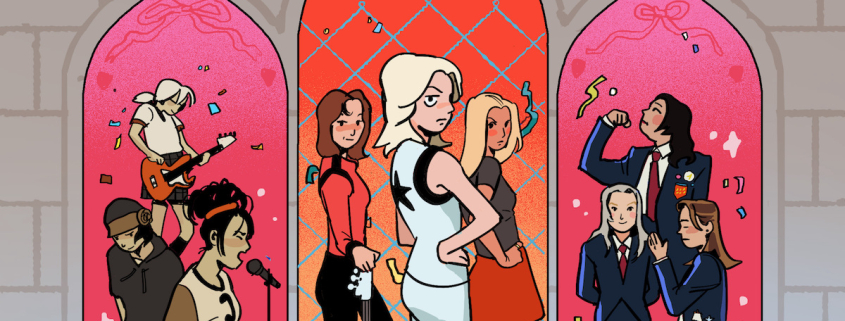The unofficial girl band bible

Sad girls everywhere rejoiced with the release of boygenius’ highly anticipated debut album “the record,” collectively producing enough tears to rival Los Angeles’ recent rain spell. Gen Z’s equivalent of Traveling Wilburys, the supergroup of generation-defining musicians — Julien Baker, Phoebe Bridgers and Lucy Dacus — has stirred up quite a riot with its unexpected comeback, having only previously released its self-titled EP in 2018.
Amid the excitement, it’s crucial to recognize the groups of women who paved the way for modern ensembles like boygenius. The following musicians developed a soundtrack of womanhood that has guided generations of young women from adolescence through adulthood, teaching them lessons on independence, community, love and empowerment. Thus follows the unofficial tale of the troupes who started it all the Girl Band Bible.
Girl Group Genesis
In the beginning, there were men.
Popular music was saturated with male performers in the early 20th century and, though women were respected as talented vocalists, it was rare that they were recognized as much more than a pretty voice. However, as World War II brought a current of newfound autonomy for women in the United States, all-female jazz bands, such as the International Sweethearts of Rhythm, swept the nation, paving the way for their successors.
The momentous emergence of rock ’n‘ roll throughout the ’50s and ’60s saw the realization of the “girl group” and, with new acts regularly coming onto the scene, it was as if they were raining down from the heavens themselves. All sharing spots on the top of the charts, groups like The Supremes, The Marvelettes and The Crystals became household names. Their angelic harmonies and synchronized choreography charmed the world’s radio and television sets with an intoxicating influence that inspired even the likes of The Beatles, who covered the Marvelettes’ number one hit “Please Mr. Postman” on the band’s second record “With the Beatles.”
Feminine Rage
An overarching, teenage dissatisfaction with the state of society sparked the onslaught of punk in the late ’70s. Acts like Kleenex — later LiLiPUT — and The Slits broke through the mostly white-male noise, and alongside X-Ray Spex frontwoman Poly Styrene — though backed by an all-male band — defined what it meant to be a woman in punk, with unapologetic, passionate expressions of their shared discontent.
This ethos would make quite the comeback in the ’90s, with bands such as L7 and Babes in Toyland following in the footsteps left by their predecessors, both maintaining that legacy and cementing their own.
Simultaneously, conceived among local feminist and activist communities, Riot Grrrl hit the national stage like a slap in the face with a sound bigger than Goliath himself. Bikini Kill, Bratmobile, Heavens to Betsy and Sleater-Kinney fronted the movement that would evolve into a touchstone for third wave feminism. Their brutally raw lyrics and exhilarating performances taught the world the true meaning of “girl power,” a term coined in Riot Grrrl zines — only later appropriated and commodified by the public.
The Second Coming: Girl Group Resurrection
Throughout the ’70s and ’80s, girl groups maintained their status as heralds of popular music and culture. Groups like LaBelle, The Pointer Sisters and Sister Sledge defined the reign of disco and soul, while Bananarama, The Go-Go’s, The Bangles and The Runaways prospered in the era of neon-clad mall rats and MTV.
Though they never really left, girl groups truly made their comeback in form, scope and status with the pop stars of the ’90s. The age of the girl group had resurrected, as listeners spiced up their lives to the tunes of Spice Girls, TLC and Destiny’s Child while southern sensation The Chicks brought country to the main stage, all becoming international sensations and pop culture icons within the decade.
Undercurrents
Among all of the pop groups and Riot Grrrls of the ’90s and 2000s, there lies an undercurrent: the indie and alternative. Alternative supergroup The Breeders and dream pop duo Azure Ray parted the sea of upbeat hits, expressing a more solemn discontent compared to their punk contemporaries, juxtaposing brighter-sounding indie rock acts such as Plumtree, Look Blue Go Purple and Shonen Knife.

A New Testament: Girl Bands of Today
Though a majority of current college students were introduced to girl bands by the pop groups of the 2010s like Fifth Harmony and Little Mix, modern girl bands continue to thrive. HAIM and boygenius are some of today’s more recognized names, as well as internationally recognized K-pop stars like BLACKPINK and Girls’ Generation, but there’s a multitude of strong contenders spread throughout all genres of popular music. Whether it be punk bands Dream Wife and Girl Friday, R&B groups like Chloe x Halle and FLO, indie rock bands like Hinds and Wet Leg or country acts like Plains and Runaway June, girl groups are seeped into popular music and here to stay.
And a very special shoutout to USC’s very own girl band, GRL!!
Take this as a starting point, a baptismal introduction to the endless talent found in girl groups, girl bands and frontwomen. Don’t forget to spread the good news in the name of the mother, the daughter and of the feminist spirit, girl power.

